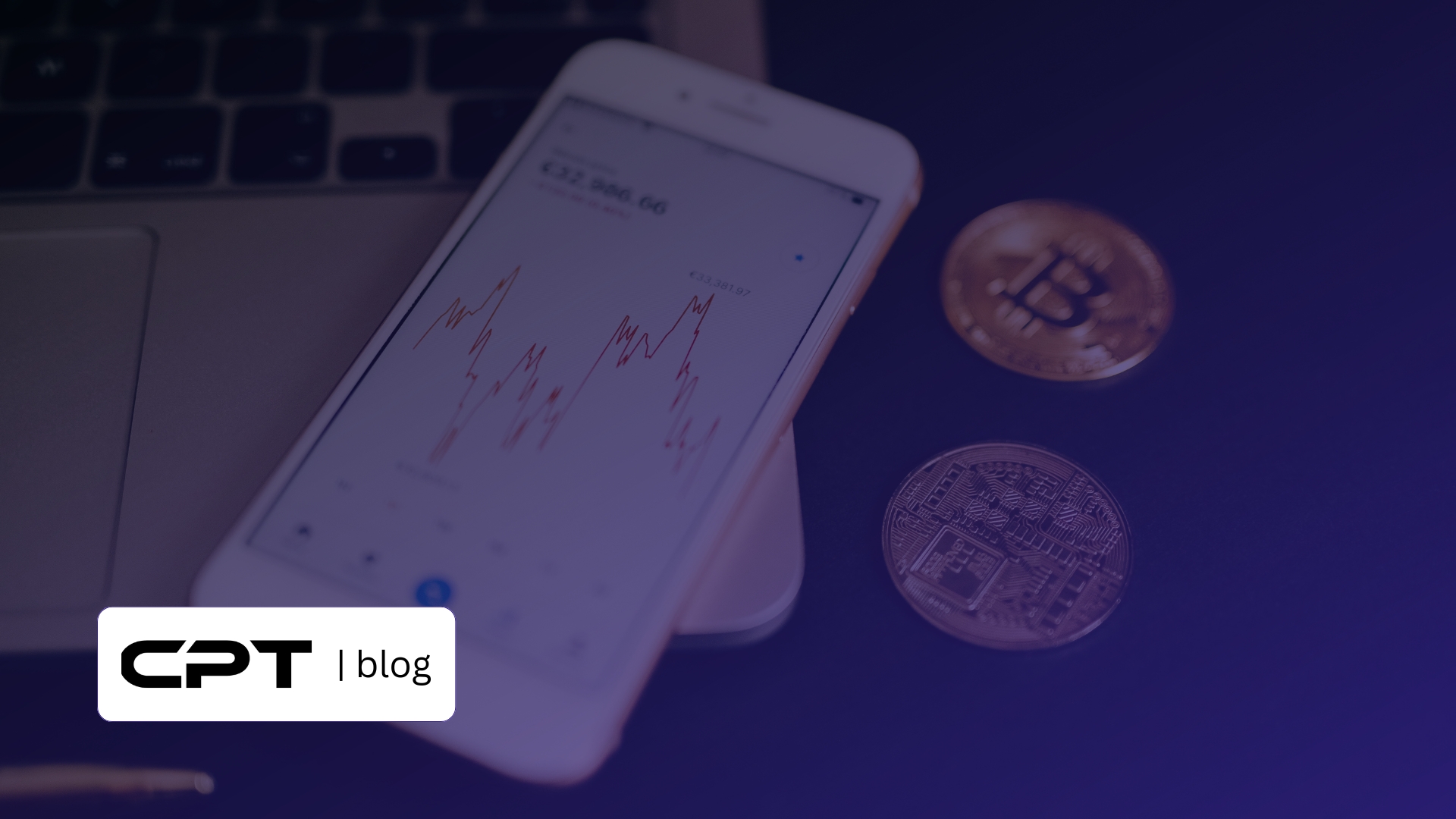
How to Day Trade Crypto Without the 25K Rule: Quick & Easy Guide
In the world of stock trading, the Pattern Day Trader (PDT) rule limits traders with less than $25,000 in their margin accounts, allowing only three day trades within five business days.
This regulation, introduced after the dot-com bubble, was meant to curb risky behaviour among under-capitalised traders. But does the same $25K rule apply when trading Bitcoin or Ethereum? Is crypto day trading more accessible for beginners with limited funds? And most importantly, can you realistically build a strategy around crypto day trading without needing a massive account?
Let’s break it down.
The Short Answer: Yes, You Can Absolutely Day Trade Crypto Without $25k
The answer is a resounding yes – you can absolutely day trade cryptocurrencies without having $25,000 in your trading account. In fact, the PDT rule simply doesn’t apply to cryptocurrency markets. This gives you complete freedom to make unlimited day trades in crypto, regardless of your account size.
While stock traders face strict regulations that limit their trading activity with smaller accounts, cryptocurrency operates in a different regulatory environment. Platforms like Robinhood and Coinbase allow users to buy, sell, and hold assets such as Bitcoin, Ethereum, Litecoin, and others without PDT restrictions. This accessibility makes crypto particularly appealing for traders with limited capital who want to actively participate in the markets.
Additionally, crypto markets operate 24/7, creating virtually limitless trading opportunities compared to traditional markets that close after hours. This continuous availability allows you to execute trades whenever you spot potential profit opportunities, without worrying about trading limitations.
Essentially, the absence of PDT rules in crypto means you could technically start with very small amounts – some platforms even allow you to purchase as little as $10 worth of coins if you wanted. This low barrier to entry makes crypto day trading accessible to almost anyone.
Despite these advantages, remember that day trading cryptocurrency comes with significant risks. The same volatility that creates profit opportunities can also lead to substantial losses. Successful crypto day trading requires careful market analysis and sound trading strategies. Many traders boast daily profits of hundreds or thousands of dollars, yet others face steep losses.
A Quick Breakdown of the PDT Rule (And Why It Doesn’t Apply to Crypto)
The financial world has strict trading regulations, and one of the most significant for day traders is the Pattern Day Trader rule. Understanding this rule clarifies why cryptocurrency has become such an attractive alternative for traders with limited capital.
What is the PDT Rule?
The Pattern Day Trader rule is a regulation established by the Financial Industry Regulatory Authority (FINRA) following the dot-com bubble burst in the early 2000s. It classifies anyone who executes four or more day trades within five business days as a pattern day trader. A day trade occurs when you buy and sell the same security on the same day.
The most notable requirement of this rule is that PDT-designated traders must maintain a minimum equity of $25,000 in their margin accounts. If your account falls below this threshold, you’re prohibited from making any further day trades until you restore the balance to $25,000. This requirement serves as a safety cushion for both traders and brokerages against potential financial risk.
Who does the PDT Rule apply to?
The PDT rule applies to anyone trading securities in a margin account who meets the pattern day trader criteria. Brokerage firms automatically flag customers who execute four or more day trades within five business days, provided these trades represent more than 6% of their total trading activity during that period.
Even if you end the day with no open positions, the trades made throughout the day create financial risk that these regulations address. Moreover, brokerage firms can impose stricter “house” requirements beyond the minimum specified in the rules.
Why is Crypto Exempt from the PDT Rule?
Crypto trading falls outside the PDT rule’s jurisdiction primarily because of how cryptocurrencies are classified. Crypto markets operate under different principles from traditional securities markets. The decentralized nature of blockchain technology and the absence of a centralized governing authority place crypto in a different regulatory category.
Consequently, when trading cryptocurrencies, there are no explicit minimum account balances required before engaging in day trading. Platforms like Alpaca Markets confirm that “cryptocurrency trading is not subject to the PDT rule” and that “crypto orders are not evaluated by PDT protection logic”.
Regulatory differences: SEC vs. CFTC vs. unregulated spot markets
The regulatory landscape for cryptocurrencies differs significantly from traditional securities. While the Securities and Exchange Commission (SEC) regulates securities like stocks, cryptocurrencies often operate in more loosely regulated environments. Many cryptocurrency exchanges function in what are known as “spot markets,” which have historically seen less regulatory oversight.
The Real Challenge: It’s Not the Rules, It’s the Lack of Capital
First and foremost, even though the PDT rule doesn’t restrict crypto day trading, there’s still a major hurdle – limited capital. This is the true challenge for most beginner traders.
Why small accounts struggle to grow
Small accounts face disproportionately high fees that quickly erode potential profits. Trading apps like PayPal and Venmo charge higher percentage fees for those trading small amounts. Indeed, you could easily pay 1% fees on each side of a trade, which adds up rapidly when making multiple day trades weekly. These fees cut into your profits, whether your trades are successful or not.
In reality, successful crypto day traders typically aim for modest, consistent gains rather than dramatic windfall profits. Professional traders target 1-2% daily returns instead of chasing massive gains.
Example: 1% gain on $1,000 = $10
Consider the math: a 1% daily gain on a $1,000 account equals just $10 profit. Even experienced traders who’ve honed their skills for 6-12 months realistically target 1-5% daily returns. Obviously, these percentages yield very different results depending on your capital:
- $500 investment might yield only $5-15 daily
- $1,000-$5,000 provides enough capital for meaningful returns
- $10,000 can generate approximately $100-300 daily in favorable markets
This explains why serious traders typically start with substantial capital.
Why leverage and capital access matter
Leverage trading gives users the ability to control larger positions with relatively small amounts of capital. For instance, with 10x leverage, $100 of Tether could open a $1,000 position. As a result, both potential profits and losses are multiplied accordingly.
An alternative solution is crypto prop trading, where firms provide capital to proven traders. After demonstrating your skills, you can trade “big” money almost immediately. The advantage? You keep 70-90% of profits while the firm absorbs losses if you hit drawdown limits. This creates a faster path to meaningful returns without risking large personal capital.
The Solution: Introduction to Crypto Prop Trading
Crypto proprietary trading firms offer an innovative solution for traders facing capital constraints. They provide a path to day trading significant sums without needing the $25k minimum required in traditional markets.
What is a crypto prop firm?
Simply put, crypto prop firms supply traders with substantial capital (typically $10,000 to $2 million or more) in exchange for a share of the profits generated. Unlike regular trading, where you risk your own money, prop firms allow you to trade with their funds after proving your skills.
Read: How to Start Crypto Prop Trading in Six Steps
How funded trader programs work
The process is straightforward: the firm provides capital, you execute trades using your strategies, and profits are shared between you and the firm. For example, if you receive $10,000 capital and make a 10% profit ($1,000), you’d keep $900 with a 90:10 split while the firm takes $100.
Understanding the evaluation phase
Most firms employ either a one-step or a two-step evaluation process. You’ll need to achieve a profit target (typically 10-15%) while adhering to strict trading rules. This evaluation period serves as a performance-based test to filter out inconsistent traders.
Profit targets and risk limits
Key rules typically include:
- Daily loss limits (usually 3-5% of account value)
- Maximum drawdown limits (6-12% below initial funding)
- Minimum trading days requirements
- Time limits to achieve profit targets
Typical profit splits (80/20, 90/10)
Most prop trading firms pay out 80-90% of profits to traders. Some firms, like HyroTrader, start at 70% and allow scaling up to 90% as you demonstrate profitability.
Initial fees and refund policies
Evaluation fees vary based on account size, ranging from about $58 for a $5,000 account to $1,250 for a $200,000 account. Many firms offer refundable challenge fees, returned upon successful completion.
But is crypto prop trading legit?
Yes, crypto prop trading is legitimate. Many traders around the world use reputable prop firms to day trade with funded accounts and share in the profits. Just be sure to choose a firm with transparent terms, verified reviews, and reliable customer support.
Why Prop Trading is a Game-Changer for Small Accounts
Consider this game-changing fact: a trader with a $100,000 funded account who achieves just a 10% return could earn $10,000, while risking almost none of their own capital. This stark contrast makes crypto prop trading transformative for those with small accounts.
Trading your $1,000 vs. trading $100,000
The math speaks for itself: earning $10,000 requires just a 10% return on a $100,000 funded account, versus needing a 200% return on a $5,000 personal account. Simply put, larger capital means exponentially greater profit potential.
Limited personal risk
Perhaps the most compelling advantage is that prop firms absorb the losses (within limits). Once qualified, you trade their money while keeping up to 90% of the profits. This arrangement dramatically reduces your financial exposure.
Discipline through rules
Rules like maximum daily losses and strict position sizing actually help you succeed. Many traders fail by blowing their accounts, but prop firms force discipline. These guardrails prevent the emotional trading mistakes that destroy most small accounts.
Faster path to scaling
With consistent profitability, prop firms increase your funding allocations. Some firms allow you to scale up to $1 million in capital. This growth path is nearly impossible when trading solo unless you already have substantial personal funds.
Check out the top crypto prop trading strategies that actually work and get you real, consistent results in the markets.
How to Choose a Reputable Crypto Prop Firm: A 7-Point Checklist
Selecting the right crypto prop firm can be challenging with so many options available. Here’s a practical checklist to help you make an informed decision.
Clear & Achievable Trading Rules: Are the profit targets realistic?
Initially, examine the firm’s profit targets. Look for reasonable goals (8-15%) rather than unrealistic expectations. Check if time limits exist–some firms allow unlimited time to achieve targets, removing unnecessary pressure. Evaluate daily loss limits (typically 4-5%) and maximum drawdown thresholds (usually 5-10%).
How much do you keep & how easy is it to get paid?
Most reputable firms offer profit splits ranging from 70-90% in your favor. Notably, some allow scaling up to 95% or even 100% with add-ons. Equally important is payout frequency, where the best firms process payments weekly or even daily. Verify what payment methods they support (bank transfers, crypto, etc.).
Do they offer a wide range of cryptos? What is the leverage?
Top firms provide access to numerous cryptocurrencies, from 30 to over 150 different assets. Leverage options typically range from 1:5 to 1:100 for cryptocurrencies. This flexibility allows for diverse trading strategies and optimal position sizing.
Do they use a standard platform like MT4/MT5 or a custom one?
Many firms utilize familiar platforms like MetaTrader 4/5, whereas others offer proprietary systems. Firms like Breakout provide custom-built terminals with tight spreads and deep order book visibility. Choose platforms that support your preferred trading style, including automated strategies if relevant.
Reputation & Reviews: What are other traders saying?
Prior to committing, research the firm’s track record. Look for companies with positive Trustpilot ratings and verified trader reviews. Examine how they’ve handled market downturns or internal crises. Firms with transparent payout reporting and challenge pass rates generally demonstrate greater trustworthiness.
Is their customer support responsive and helpful?
Quality support can make or break your trading experience. The best firms provide 24/7 multilingual assistance via email, live chat, and telephone. This availability demonstrates a commitment to trader success and operational reliability, particularly during critical trading situations.
Scaling Plan: Is there a clear path to getting more capital as you succeed?
Assess whether the firm offers progressive capital increases based on performance. Many reputable companies allow scaling up 25% every few months, potentially reaching $1 million or more. This growth path rewards consistency and provides long-term partnership potential.
Step-by-Step: Your First 30 Days as a Prop Trader
Now that you understand how crypto prop trading works, let’s map out your 30-day journey to getting funded. This practical roadmap will guide you from initial research to successfully completing the challenge.
Week 1: Research & compare firms
Start by thoroughly researching different crypto prop firms. Use CryptoPropTrader to streamline your search and identify the ones that align with your trading style. This trusted platform provides in-depth evaluations based on expert analysis, community reviews, and frequent updates. You can also compare key evaluation models, such as one-step versus two-step challenges, along with typical profit targets (8–15%) and drawdown limits (5–10%) to make a well-informed decision.
Week 2: Prepare. Demo trade using the firm’s rules to get a feel for it.
Test your strategy in demo conditions that mimic the firm’s evaluation setup. Practice adhering to maximum daily loss limits and overall drawdown restrictions. Many successful traders recommend risking only 1-2% per trade during this phase.
Week 3-4: Take the Challenge. Sign up and begin the evaluation.
Once prepared, purchase your challenge. Depending on the firm, you’ll aim for profit targets around 8-10% while avoiding drawdown limits. Maintain discipline – conservative traders often pass these evaluations.
Beyond: Getting Funded. What happens after you pass
Upon success, you’ll receive a funded account with profit splits typically starting at 80:20. Payouts occur within 7-30 days after funding. Many firms offer scaling opportunities, increasing your capital by 25% every few months.
What happens if I fail the challenge?
Most firms allow retries after a cooling-off period. Use failure as a learning opportunity by analyzing your trading journal to identify patterns and mistakes.
Can I use bots or EAs?
Some firms permit automated trading. HyroTrader, for example, embraces algorithmic traders. Others require self-created bots only or restrict third-party applications.
Do I have to pay taxes on prop firm profits?
Absolutely. Profits from prop trading are generally considered taxable income in most jurisdictions. Tax obligations vary widely depending on your country of residence, so it’s essential to consult a qualified tax professional who understands local regulations before filing.
Conclusion
Cryptocurrency day trading offers a unique opportunity for traders with limited capital to actively participate in markets without the $25,000 Pattern Day Trader rule restriction. Although regulatory barriers don’t exist in crypto, the fundamental challenge remains the same – turning a small account into meaningful profits. Fortunately, crypto proprietary trading firms provide a powerful solution to this problem.
When you trade with a funded account, the math works dramatically in your favor. Instead of struggling to generate substantial returns on a $1,000 personal account, you could potentially trade with $100,000 of a prop firm’s capital. This difference transforms the equation completely – a modest 10% return suddenly means $10,000 in potential earnings rather than just $100.
Despite the clear advantages, remember that prop trading still demands skill and consistency. Most traders benefit from practising extensively with demo accounts before attempting evaluation challenges. Though the learning curve exists, the potential rewards far outweigh the initial effort.
For traders looking to build their skills and follow a proven strategy, crypto prop trading isn’t just a way around the $25k rule – it could be a smarter and more rewarding path altogether. You gain access to substantial capital, face limited personal risk, and benefit from a structured environment that encourages disciplined trading.
So, are you ready to trade with up to $200,000? Explore the best crypto prop firms out there, with detailed reviews to help you choose the right one for your strategy.



